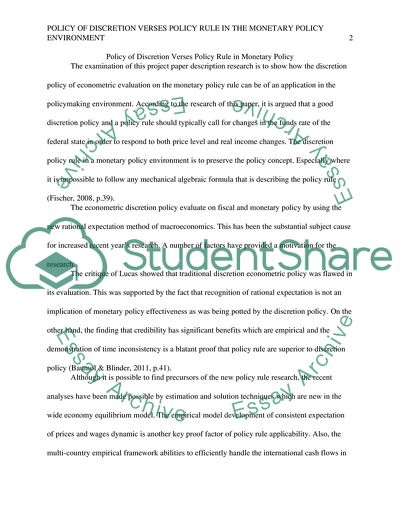Cite this document
(“A policy of discretion gives central bank the ability to react to news Essay”, n.d.)
A policy of discretion gives central bank the ability to react to news Essay. Retrieved from https://studentshare.org/macro-microeconomics/1670842-a-policy-of-discretion-gives-central-bank-the-ability-to-react-to-news-about-the-economy-in-this-light-discuss-whether-discretion-is-a-better-way-to-run-monetary-policy-than-following-a-rule
A policy of discretion gives central bank the ability to react to news Essay. Retrieved from https://studentshare.org/macro-microeconomics/1670842-a-policy-of-discretion-gives-central-bank-the-ability-to-react-to-news-about-the-economy-in-this-light-discuss-whether-discretion-is-a-better-way-to-run-monetary-policy-than-following-a-rule
(A Policy of Discretion Gives Central Bank the Ability to React to News Essay)
A Policy of Discretion Gives Central Bank the Ability to React to News Essay. https://studentshare.org/macro-microeconomics/1670842-a-policy-of-discretion-gives-central-bank-the-ability-to-react-to-news-about-the-economy-in-this-light-discuss-whether-discretion-is-a-better-way-to-run-monetary-policy-than-following-a-rule.
A Policy of Discretion Gives Central Bank the Ability to React to News Essay. https://studentshare.org/macro-microeconomics/1670842-a-policy-of-discretion-gives-central-bank-the-ability-to-react-to-news-about-the-economy-in-this-light-discuss-whether-discretion-is-a-better-way-to-run-monetary-policy-than-following-a-rule.
“A Policy of Discretion Gives Central Bank the Ability to React to News Essay”, n.d. https://studentshare.org/macro-microeconomics/1670842-a-policy-of-discretion-gives-central-bank-the-ability-to-react-to-news-about-the-economy-in-this-light-discuss-whether-discretion-is-a-better-way-to-run-monetary-policy-than-following-a-rule.


